Golf hats are an essential accessory for any golfer, providing protection from the sun and adding style to your game. However, after a few rounds, they can accumulate sweat, dirt, and stubborn stains, making them look less than appealing. Knowing how to properly wash golf hats can extend their lifespan and keep them looking as good as new. In this guide, we’ll walk you through everything you need to know about washing golf hats, from materials and methods to drying and storing them.
Why Is It Important to Wash Golf Hats?
Washing your golf hats is crucial for several reasons:
- Hygiene: Sweat and oils from your head can lead to a build-up of bacteria, which might cause unpleasant odors.
- Appearance: Regular cleaning prevents stains and keeps the colors vibrant.
- Durability: Proper care helps maintain the shape and integrity of the hat over time.
Let’s dive into the step-by-step process!
Step 1: Determine the Material of Your Golf Hat
Golf hats come in various materials, and the cleaning method can vary accordingly. Below are some common materials along with washing tips:
| Material | Washing Method |
|---|---|
| Cotton | Machine wash or hand wash, air dry. |
| Polyester | Machine wash on a gentle cycle, air dry. |
| Wool | Hand wash in cold water, lay flat to dry. |
| Nylon | Hand wash to prevent deformation, air dry. |
| Straw (Visors) | Spot clean using a damp cloth; avoid immersing in water. |
Tip: Check the care tag on your hat first. It often has valuable instructions for cleaning.
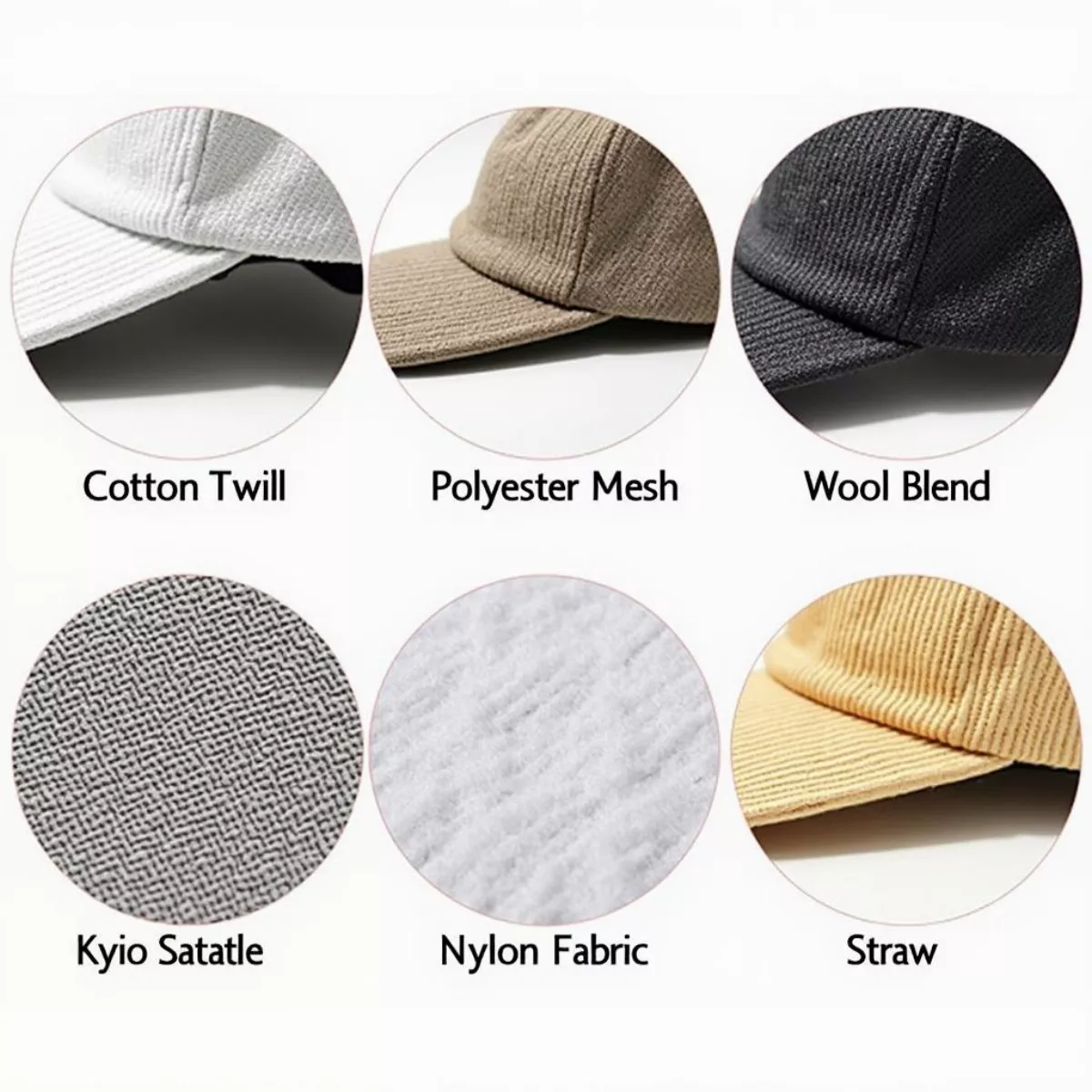 Different Golf Hat Materials
Different Golf Hat Materials
Step 2: Pre-Cleaning Steps
After determining the material, here are the steps to prep your hat for washing:
- Remove any accessories: Take off pins, patches, or any embellishments that might get damaged during cleaning.
- Brush off dirt: Use a soft-bristled brush to remove loose dirt and dust.
- Spot clean stains: For stubborn stains, create a mixture of mild detergent and water. Dip a clean cloth in the solution and gently dab the stained areas. Avoid rubbing, as this may damage the fabric.
Step 3: Choose Your Washing Method
Machine Washing
If the care tag allows machine washing, follow these steps:
- Use a hat cage: If you have one, place your hat in a hat cage to maintain its shape during the wash.
- Select the right cycle: Use a gentle cycle with cold water and a mild detergent, as hot water can shrink or fade fabrics.
- Avoid fabric softeners: They can damage the moisture-wicking properties of golf hats.
Hand Washing
If your hat is made of more delicate materials like wool, opt for hand washing:
- Fill a sink or bowl with cold water: Add a few drops of mild detergent.
- Submerge the hat: Let it soak for about 5-10 minutes.
- Gently scrub: Use your fingers or a soft cloth to clean it, focusing on stained areas. Avoid twisting or wringing the hat, as this can distort its shape.
- Rinse thoroughly: Make sure all detergent is washed out to prevent residue buildup.
 Handwashing a Golf Hat
Handwashing a Golf Hat
Step 4: Drying Your Golf Hat
Getting your golf hat to dry correctly is just as crucial as washing it. Here are the best practices for drying:
- Air dry: Lay your hat on a clean towel, reshaping the brim if needed. Avoid placing it in direct sunlight, as this can cause fading.
- Avoid dryers: Never put your hat in the dryer, as the heat can warp its structure.
- Use a hat rack: If you have a hat rack or a clean, dry bowl, you can place your hat upside down on it to help maintain its shape while drying.
Step 5: Storing Your Clean Golf Hats
Once your golf hats are clean and dry, proper storage is vital:
- Keep them dry: Store hats in a cool, dry environment to prevent mold and mildew.
- Avoid stacking: Store them upright or on a hat rack to maintain their shape.
- Protection from dust: Consider using bags or boxes to protect your hats from dust and damage.
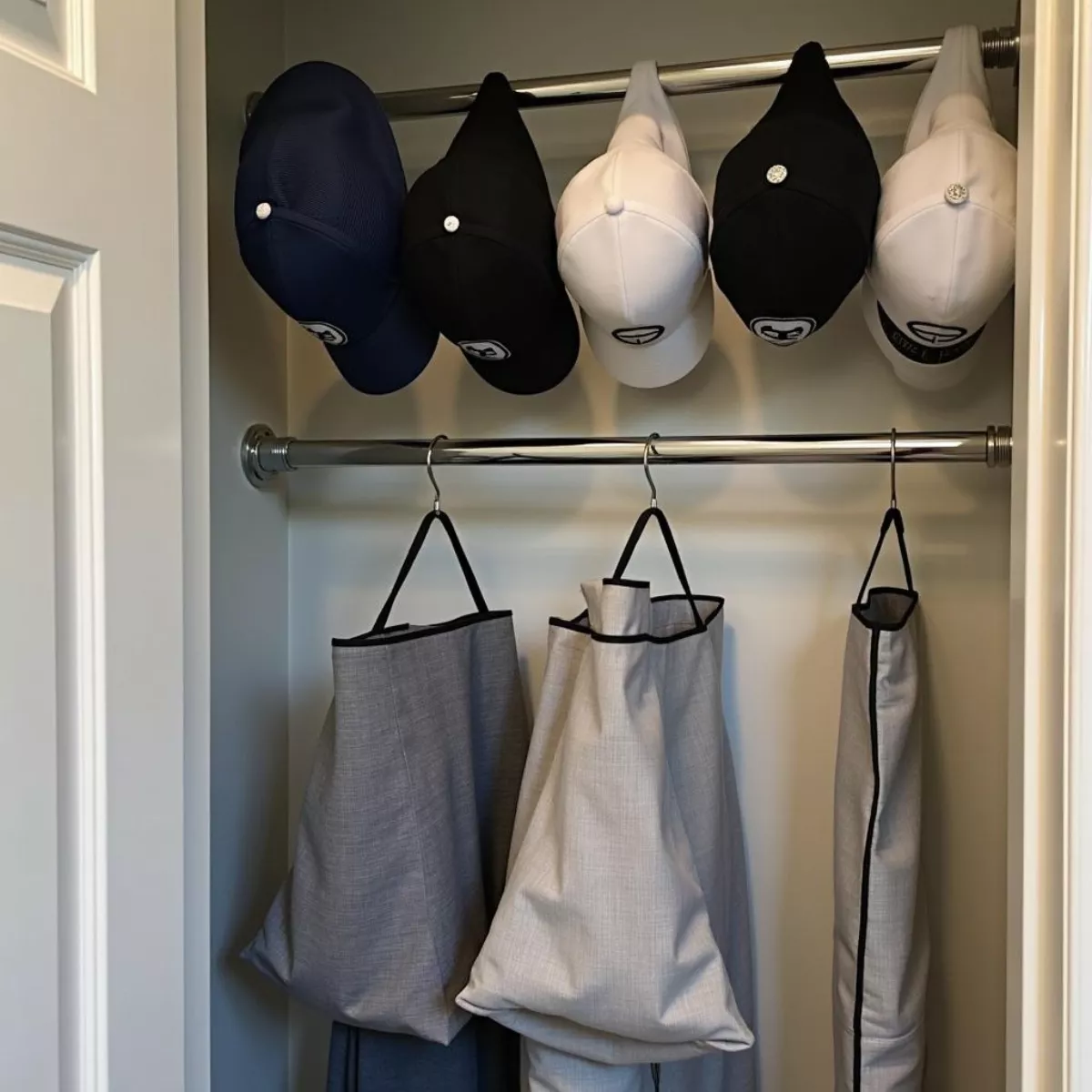 Proper Golf Hat Storage
Proper Golf Hat Storage
Key Takeaways
- Identify the material: Always check the care tag for washing instructions.
- Pre-clean: Remove accessories, brush off dirt, and spot clean stains.
- Choose the washing method: Use a machine wash for durable fabrics, and hand wash delicate materials.
- Proper drying techniques: Air dry only, avoiding direct sunlight and heat sources.
- Store correctly: Keep your clean hats in a cool, dry place, avoiding stacking or crushing them.
Frequently Asked Questions (FAQ)
Q1: Can I wash my golf hat in hot water?
A1: It’s best to wash golf hats in cold water to prevent shrinking and color fading.
Q2: Should I use bleach to remove stains?
A2: Avoid bleach, as it can damage the hat’s fabric and alter colors. Instead, use a mild detergent or a specialized stain remover.
Q3: Can I put my golf hat in the dryer?
A3: No, you should never put your golf hat in the dryer. Always air dry to maintain its shape.
Q4: How often should I wash my golf hat?
A4: It depends on usage. If you play frequently, consider washing your hat every few weeks.
Q5: What’s the best way to remove stubborn stains?
A5: Spot cleaning with a mixture of mild detergent and water is effective for stubborn stains. Gently dab the area without rubbing.
Q6: Can I clean my golf cap with vinegar?
A6: Yes, you can create a mixture of vinegar and water for spot cleaning. Always test a small area first.
Q7: What do I do if my hat loses its shape?
A7: Reshape your hat while it’s damp and let it dry on a hat rack or a bowl to maintain its form.
Q8: Will washing harm embroidered logos?
A8: If washed carefully and following proper methods, most embroidered logos should withstand washing. Avoid vigorous scrubbing.
Q9: Are there specific detergents for hats?
A9: While there’s no specific detergent for hats, using mild detergents is always recommended.
Q10: How can I make my golf hat smell fresh?
A10: Regular washing removes odors. You can also spray a light fabric refresher after cleaning.
With this guide, you now have all the tools you need to keep your golf hats looking fresh and clean. Take care of your gear, and it will take care of you on the course. Happy golfing!

 Consequences of Overloaded Golf Cart
Consequences of Overloaded Golf Cart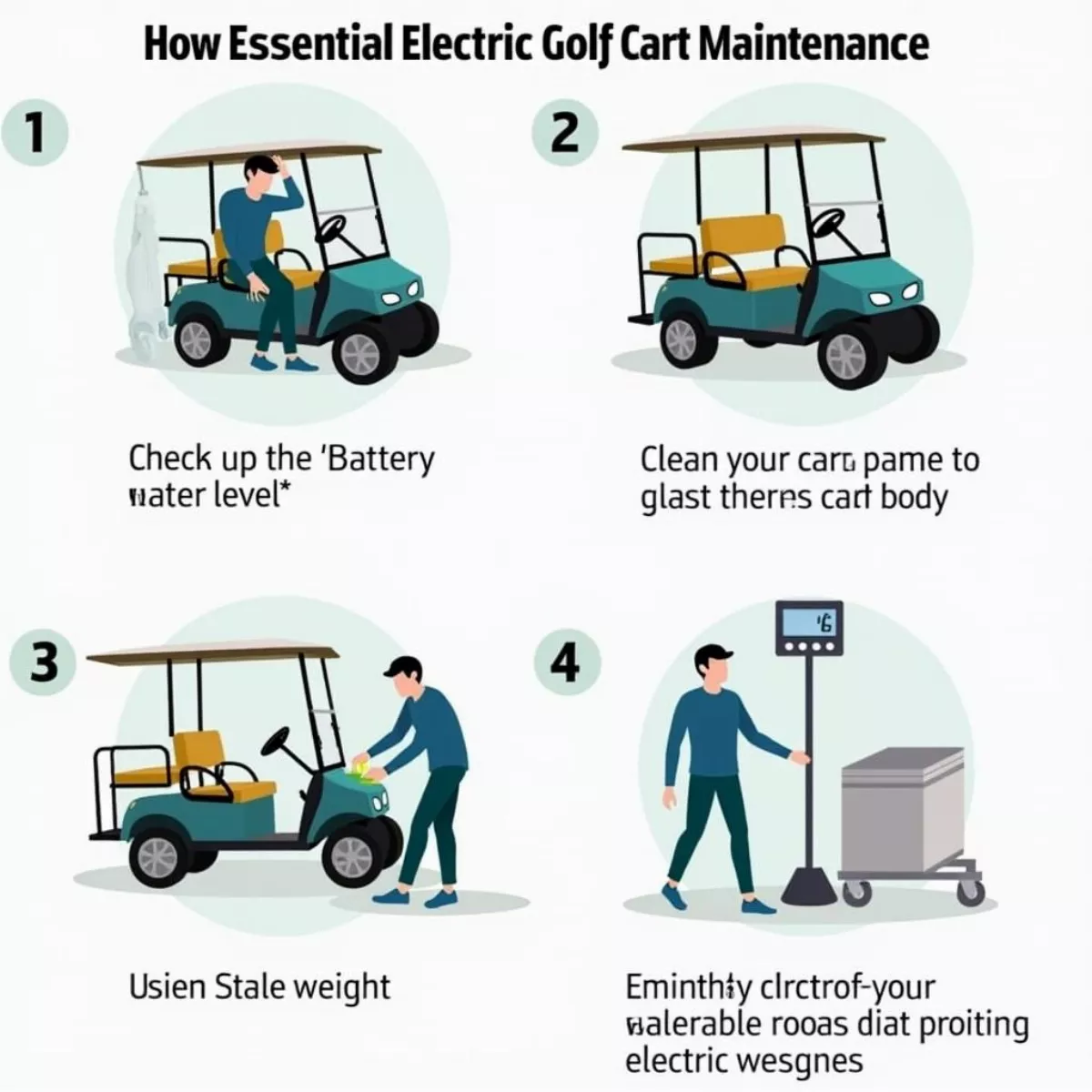 Electric Golf Cart Maintenance
Electric Golf Cart Maintenance
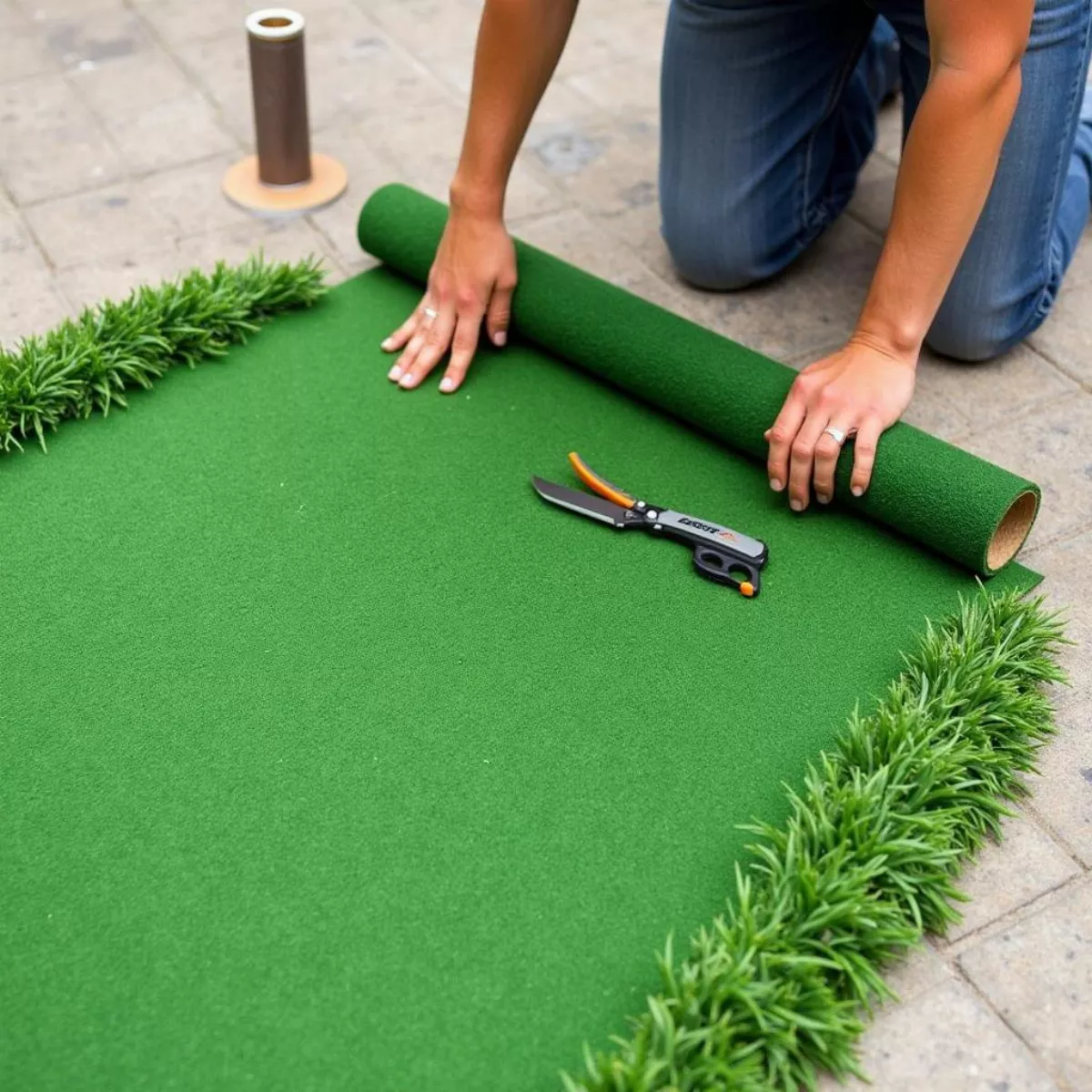 Laying synthetic turf for a mini golf course
Laying synthetic turf for a mini golf course Mini golf course obstacles and decorations
Mini golf course obstacles and decorations
 Golf Cart Path Leading Through Ballyhack
Golf Cart Path Leading Through Ballyhack Golfer Teeing Off at Ballyhack During Golden Hour
Golfer Teeing Off at Ballyhack During Golden Hour Golfers Celebrating on the Green at Ballyhack
Golfers Celebrating on the Green at Ballyhack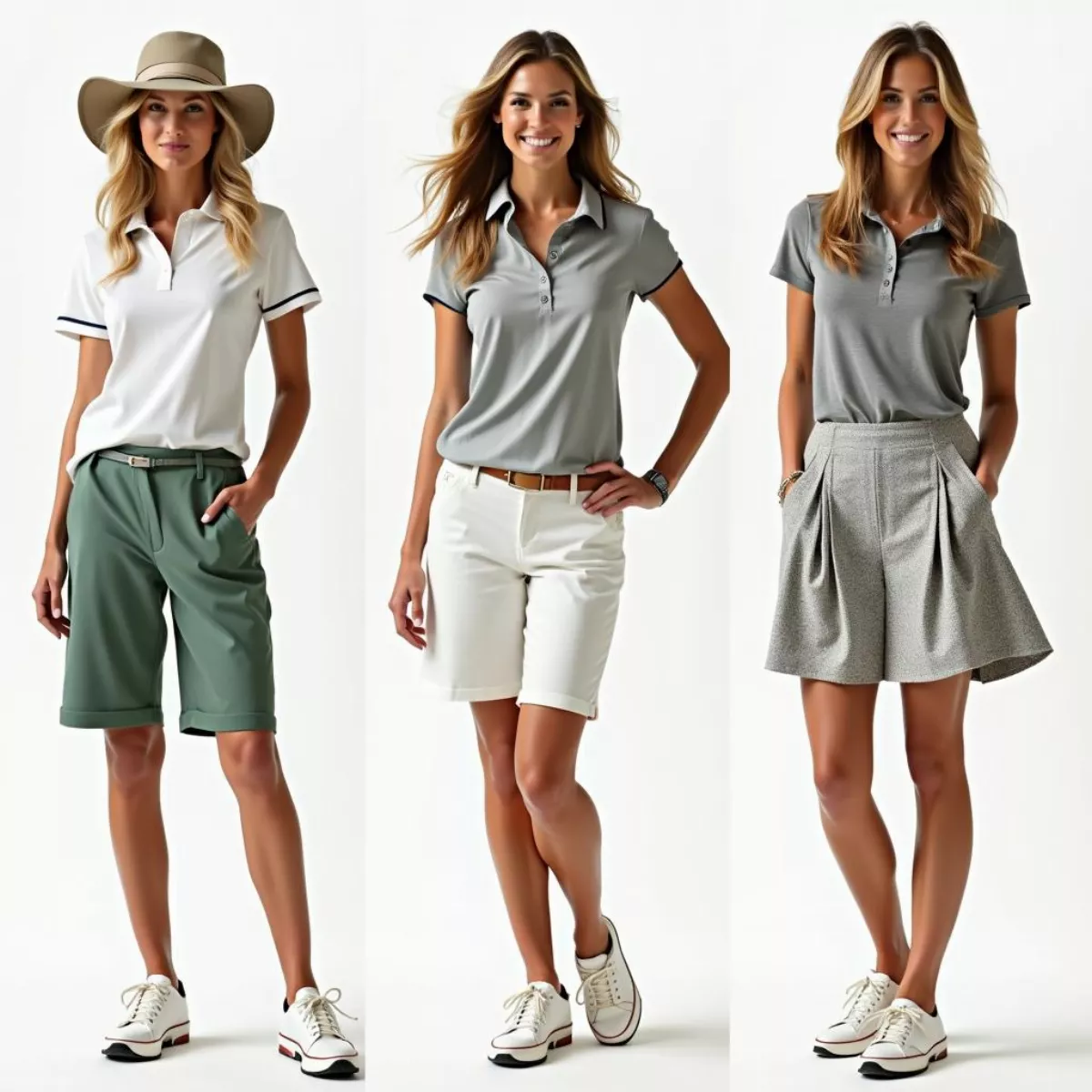
 Woman Spectator at PGA Tournament
Woman Spectator at PGA Tournament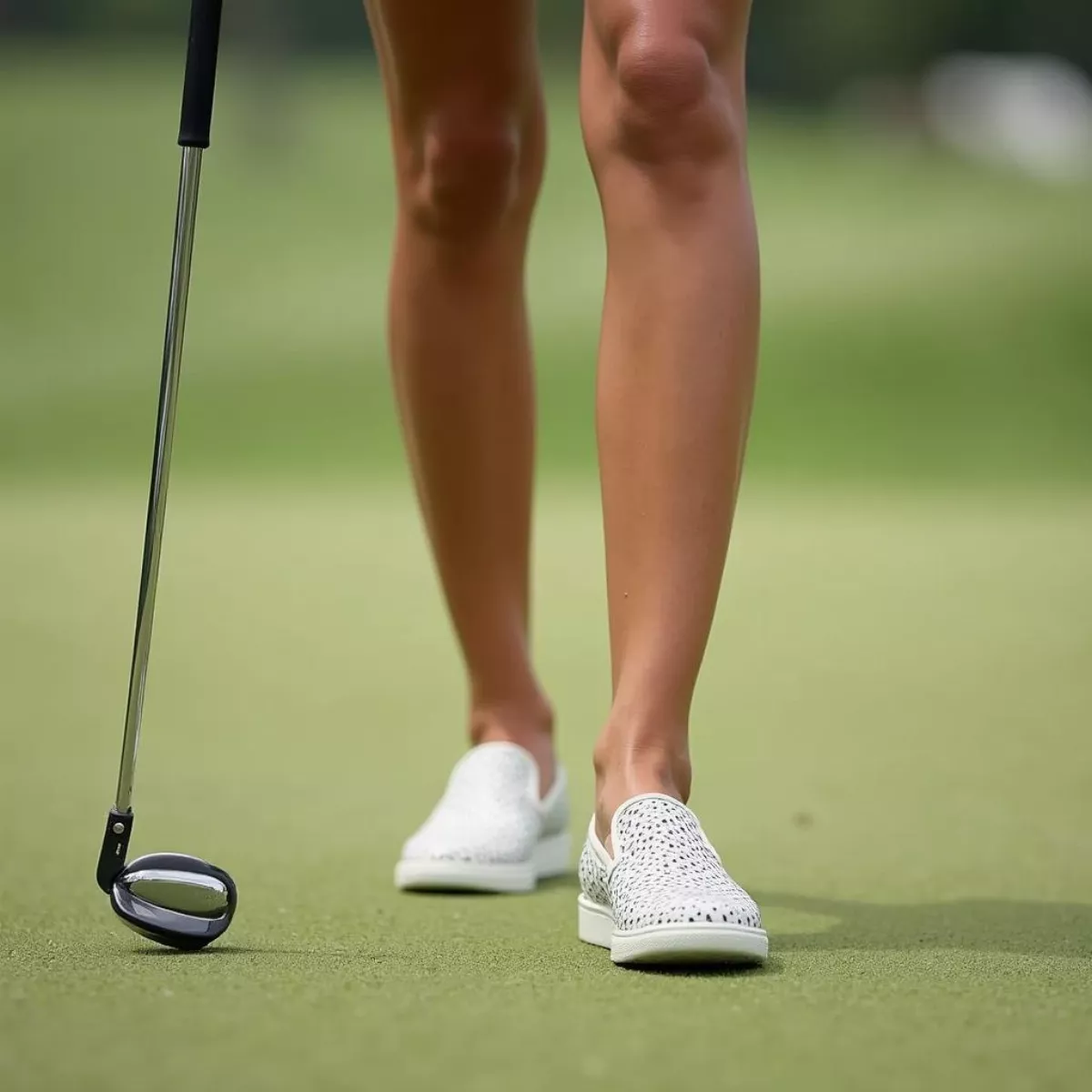 Comfortable Footwear for Golf Tournament
Comfortable Footwear for Golf Tournament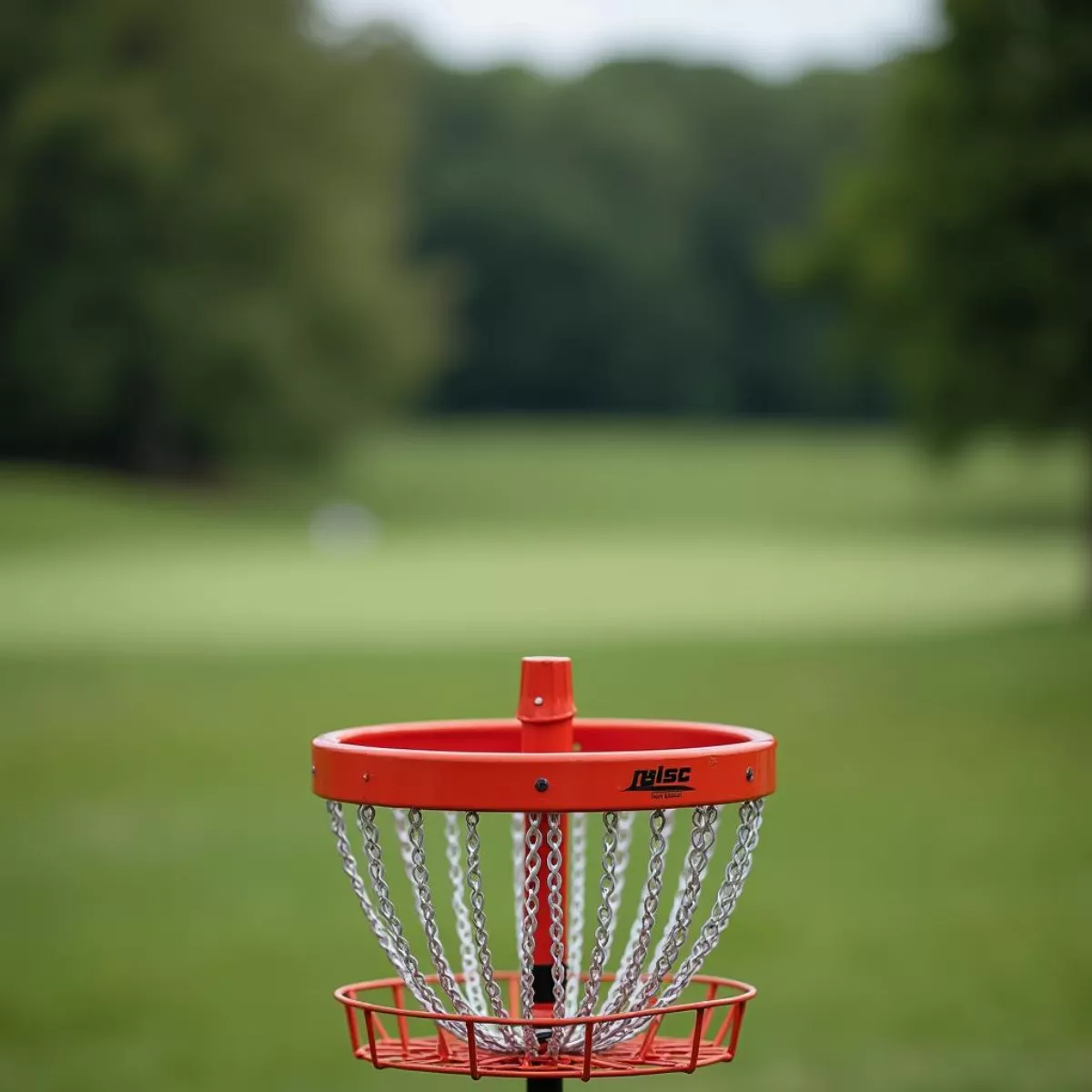
 Friends playing Frisbee in a park
Friends playing Frisbee in a park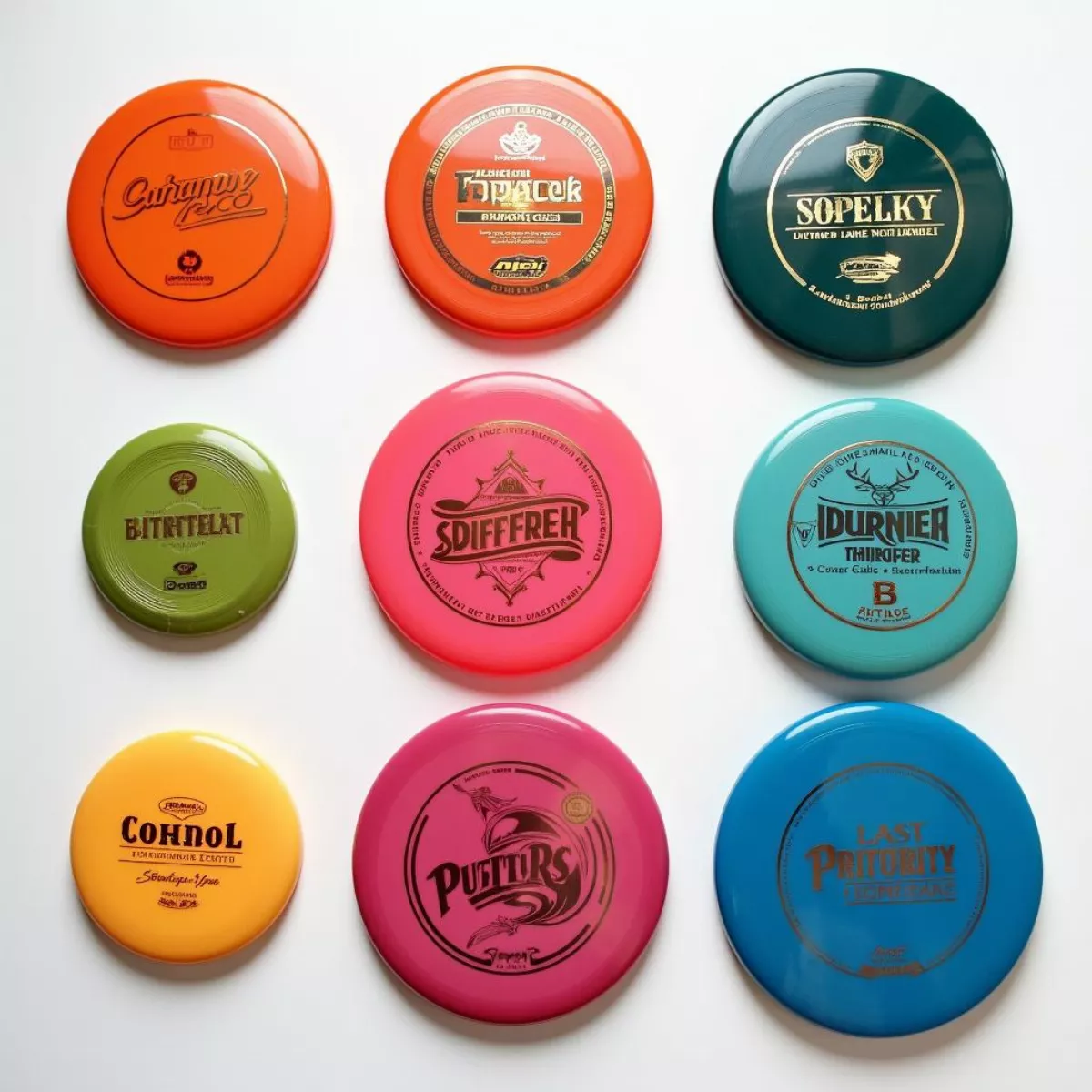 Variety of disc golf discs
Variety of disc golf discs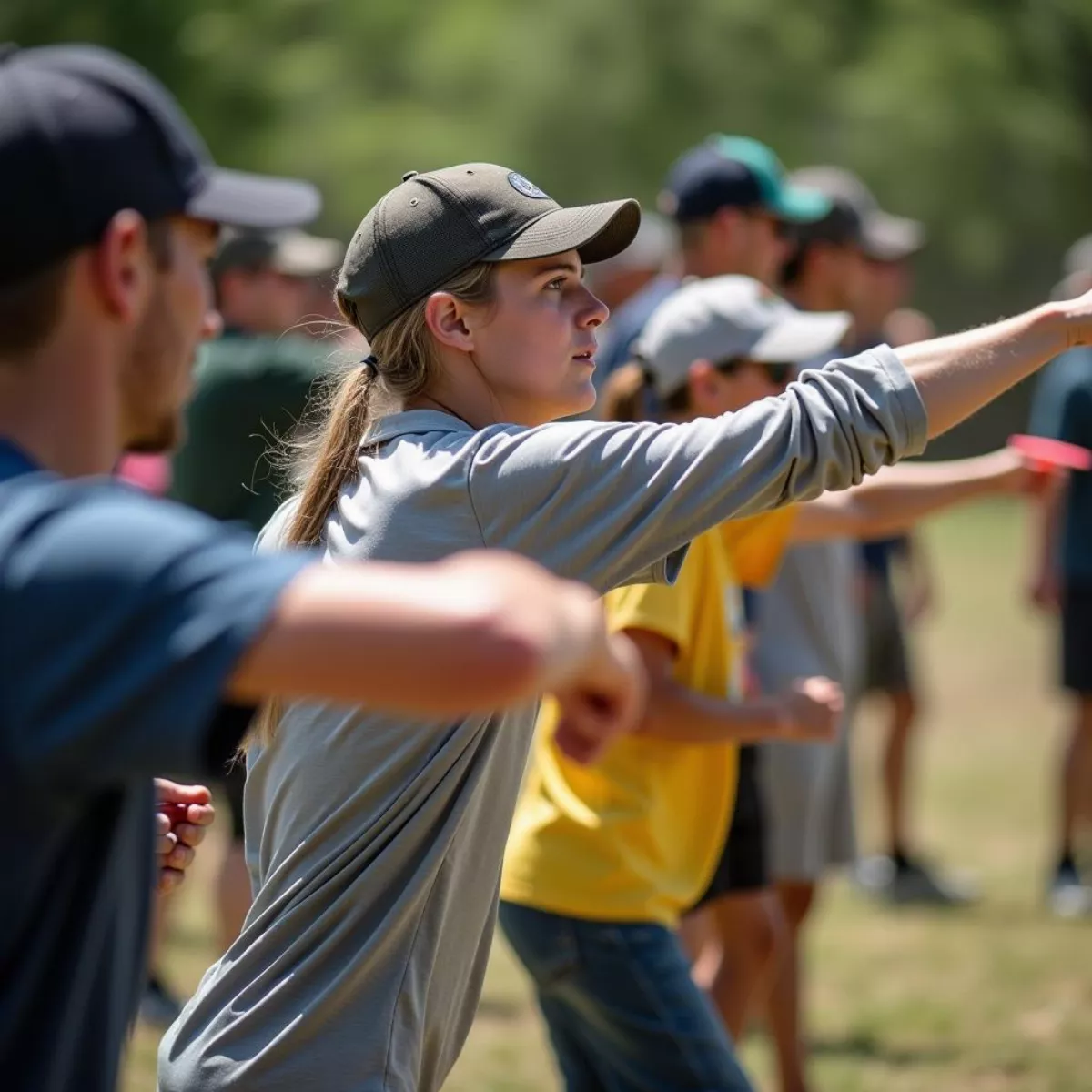 Disc golf tournament players
Disc golf tournament players
 Eagle Ridge Resort Golf Course
Eagle Ridge Resort Golf Course Big Cedar Lodge – Top of the Rock Golf Course
Big Cedar Lodge – Top of the Rock Golf Course Greystone Country Club – 18th Hole
Greystone Country Club – 18th Hole
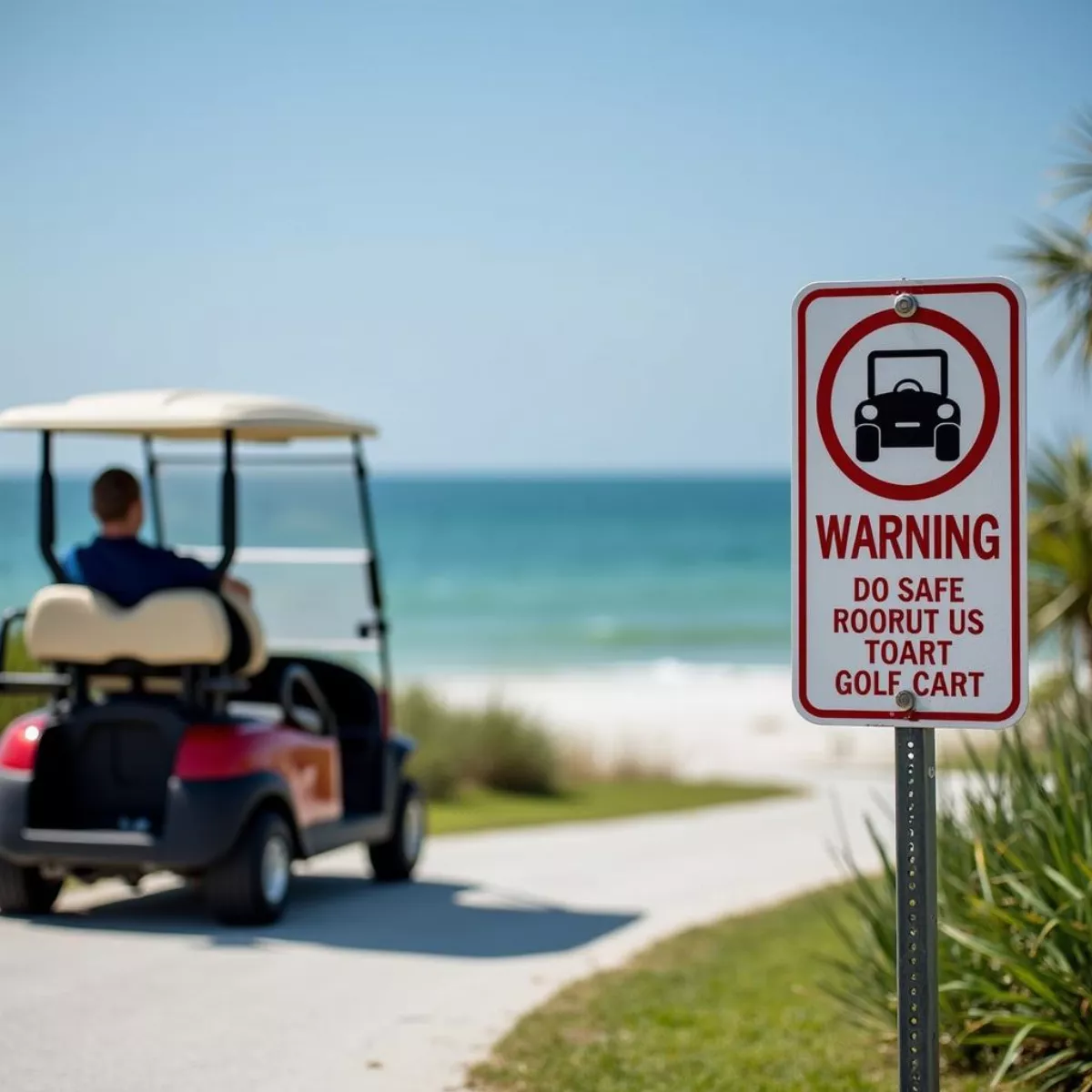 Golf Cart Parked Near Beach Warning Sign
Golf Cart Parked Near Beach Warning Sign
 Golfer Taking a Swing
Golfer Taking a Swing Golfers Celebrating
Golfers Celebrating Golf Carts on Course
Golf Carts on Course